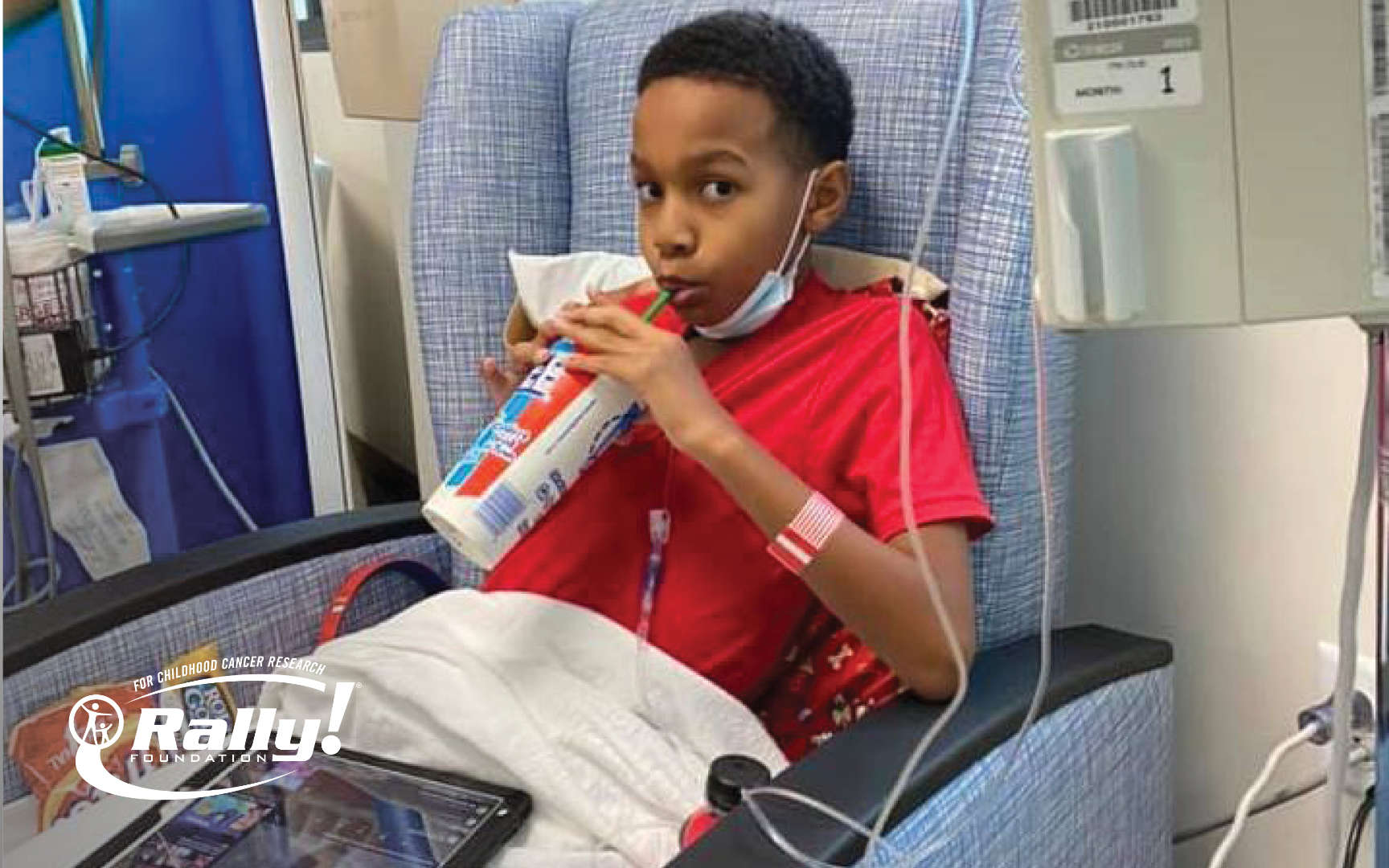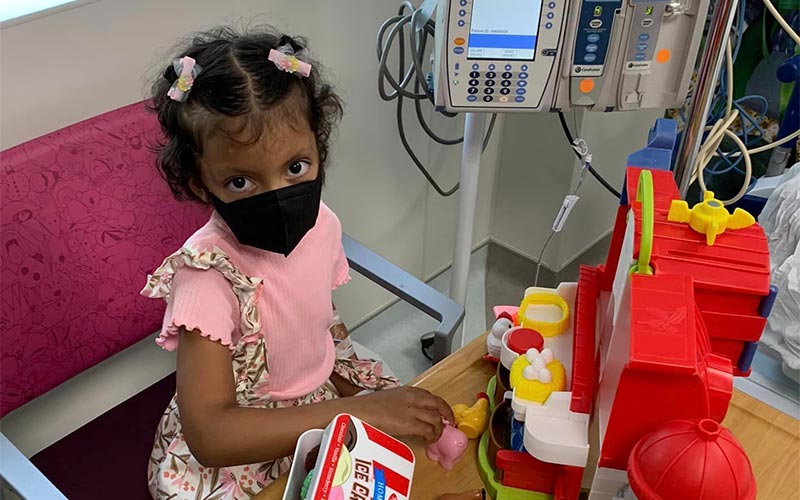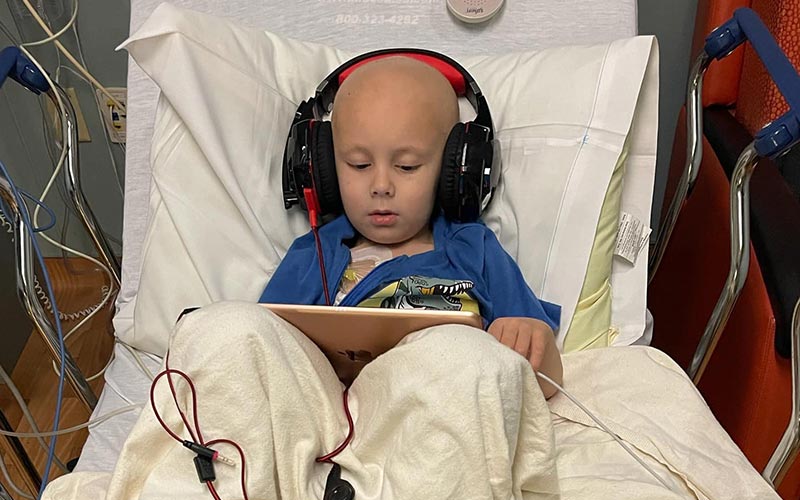What is Infusion?

Rally Kid Elan, Beating Stage 3 Wilms Tumor a Solid Tumor Cancer, receiving an infusion.
Your child has been diagnosed with cancer.
The doctors have established a plan for treating this cancer.
Part of this plan includes infusions.
So…what are infusions?
Infusion is a big word that really means administering medications directly into a vein, or intravenously (IV). A needle is sometimes inserted into a patient’s hand or arm. This is an efficient delivery system for hydration, antibiotics, blood transfusions, and immunotherapy.
As part of your child’s cancer protocol, or treatment plan, chemotherapy is usually included.
Chemotherapy drugs are used to destroy cancer cells, and are typically administered by infusion. Chemotherapy can also be used to shrink tumors before surgery or radiation, or to boost the effects of radiation.

Rally Kid Ailani, Fighting acute lymphoblastic leukemia a Blood Cancer, receiving an infusion.
While some chemotherapy can be administered with an IV in the patient’s hand, the most common infusion procedure for chemotherapy is through a port-a-catheter, or “port”.
Most childhood cancer patients have a port surgically implanted in their chest area. The fancy name for a port is a central venous access device (CVAD). During port placement surgery, a thin, flexible tube (catheter) is inserted into a larger vein in the body. Administered drugs flow from a bag that is attached to the port and controlled by an electric pump.

Rally Kid Alexander, Fighting Medulloblastoma a Brain Cancer, receiving an infusion.
Why is chemotherapy administered this way? Chemotherapy drugs are powerful, very toxic, and need to be inserted into the body very slowly and over an extended period of time.
What are the advantages of having a port?
Children, and adults for that matter, are not fond of needles, and a port eliminates the need for repeated needle punctures, also called “pokes”. A port can also be used for administering anesthetic medications, immunotherapies, and targeted therapies, as well as taking blood samples.
A port can stay in for a long time — and makes those months of treatment less stressful. It allows for more than one kind of chemotherapy to be administered at a time, in addition to other medicines.
Infusions can take place when a child is inpatient — either in the hospital’s infusion clinic or in their hospital room — or via a small pump in an outpatient setting such as at home. Infusion sessions can last from an hour to several hours, and most children’s protocols have chemotherapy infusions scheduled at one- to three-week intervals.
Rally Foundation funds the most cutting-edge research projects to find better cancer treatments, including new and/or improved chemotherapy drugs, with fewer long-term side effects and, ultimately, cures!
